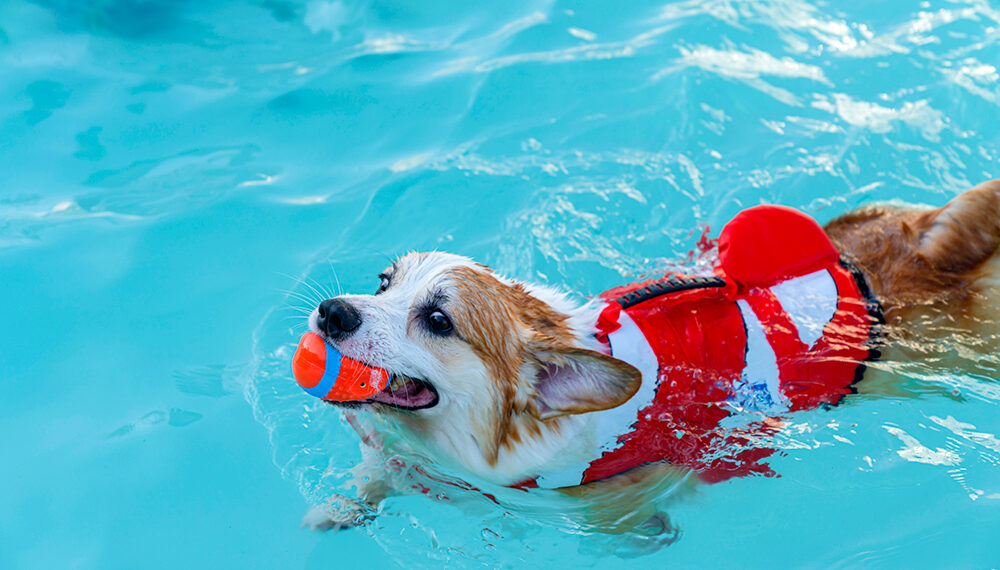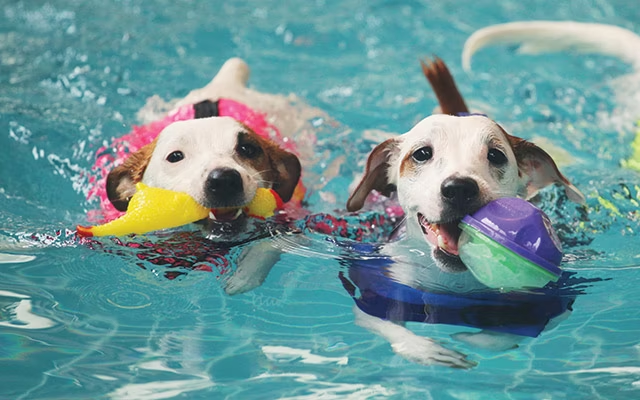Swimming can be a fun and refreshing activity for your dog, especially during the hot summer months. However, to ensure the best dog health care and to keep your canine companion safe while swimming, it’s essential to follow some key safety tips. In this guide, we’ll cover everything you need to know about safe swimming practices for dogs. Safe Swimming Tips for Dogs
Why Swimming is Beneficial for Dogs
Before diving into safety tips, it’s important to understand why swimming is great for dogs:
- Exercise: Swimming provides a full-body workout that improves cardiovascular health and muscle tone.
- Joint Relief: For dogs with joint issues or arthritis, swimming can be a low-impact way to stay active.
- Cooling Off: Swimming helps dogs cool down during hot weather, reducing the risk of heatstroke.
Safe Swimming Tips for Dogs
To ensure the best dog health care while swimming, follow these safe swimming tips:

1. Choose the Right Location
- Dog-Friendly Pools: Opt for pools specifically designed for dogs, which often have safety features and are free from harmful chemicals.
- Clean Natural Water: If swimming in natural bodies of water, ensure the water is clean and free from hazards such as strong currents or sharp objects.
2. Supervise Your Dog at All Times
- Never Leave Unattended: Always keep a close eye on your dog while swimming. Even strong swimmers can encounter problems.
- Watch for Signs of Fatigue: Ensure your dog doesn’t get overly tired. If they seem exhausted or disoriented, help them out of the water immediately.
3. Use Safety Gear
- Life Jackets: Invest in a doggy life jacket, especially if you’re swimming in deep water or your dog is a novice swimmer.
- Protective Gear: Consider using dog-specific swim goggles or ear plugs to protect their eyes and ears from irritation.

4. Know the Signs of Water-Related Issues
- Ear Infections: Dogs that swim frequently are prone to ear infections. Dry their ears thoroughly after swimming.
- Digestive Upset: Be mindful of your dog drinking too much pool or lake water, which can cause stomach upset.
5. Gradually Introduce Your Dog to Swimming
- Start Slow: Allow your dog to get used to the water gradually. Begin with shallow water and gradually move to deeper areas as they become more comfortable.
- Positive Reinforcement: Use treats and praise to encourage your dog and make swimming a positive experience.
Post-Swim Care
After a swim, proper care is crucial to maintain the best dog health care:
- Rinse Off: Rinse your dog with fresh water to remove chlorine or salt that can irritate their skin.
- Dry Thoroughly: Make sure your dog is completely dry, especially their ears, to prevent infections.

Conclusion
By following these Safe Swimming Tips for Dogs, you can help ensure the best dog health care and make swimming a safe and enjoyable activity for your furry friend. Remember, supervision, the right gear, and proper post-swim care are key to a safe swimming experience. Keep these tips in mind to maintain your dog’s well-being and enjoy many happy swimming adventures together!
Incorporating these best practices will not only protect your dog’s health but also help them make the most of their swimming experience.





















